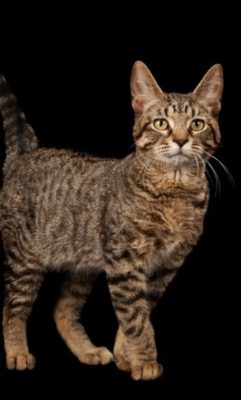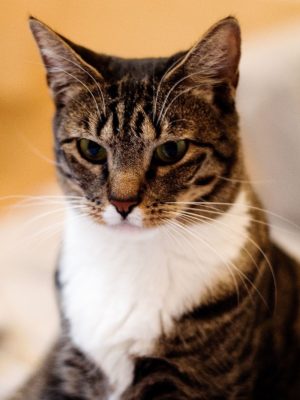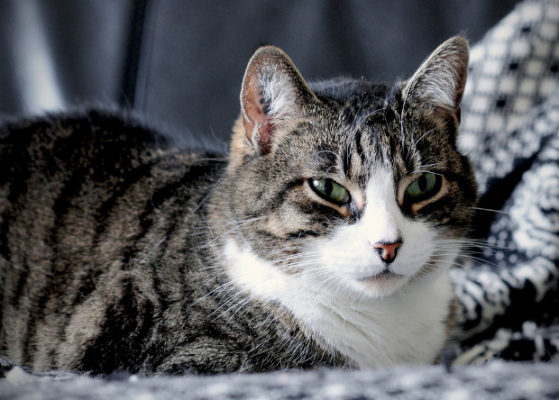Domestic Cat

Different breeds of house cats can vary in personality. All pets are very loyal to the owner and love to be the center of attention. Cats are playful and good-natured. They are indulgent to everyone, in most cases not bad with children.
Table of Contents
Breed Information
| Origin | – |
| Size | 23-40 cm |
| Weight | 2.5-7 kg |
| Fur Type | Semi-long-haired |
| Color | Tabby, solid, colorpoint, bicolor, smoky |
| Lifestyle | Outdoors, indoors |
| Lifespan | 9-20 years |
| FIFe Classification | – |
| WCF Classification | Group 3: “Short-haired” Group 2: “Semi Long-haired” Breed designation – HHP |
| TICA Classification | – |
| Group | Hairless cats, hypoallergenic cats, long-haired cats, cats for kids, short-haired cats, popular cats, cats for apartments |
| Price | No information |
Breed Photos
Origin History
All domestic cats (Felis catus) are descended from the subspecies of the steppe cat. They dispersed around the world in several waves. The first happened at the dawn of agriculture around 10,000-7,000 years BC. After another couple of thousand years, cats from Egypt spread to Europe and North Africa.
The first domestication occurred about 9,500 years ago in the Middle East. It happened in the Fertile Crescent, the birthplace of the earliest human civilizations. At that time, people settled down and began farming. There was a need to protect crops from rodents, and cats were up to the task. It is still debated who first domesticated the animal. The Egyptians, for example, did so about 2000 years ago, which is later than the Fertile Crescent.
Appearance
The subspecies of a domestic cat include many breeds with different looks and sizes. The average body length of an animal is 60 cm, and the tail length is 25-30 cm. The giant cat in the world has a length of 121.9 cm. The pet’s average weight is 2,5-6,5 kg, Siberian cat and Maine Coon can reach 11-13 kg. The record is 21.3 kg, but this weight is considered obese.
Cats have the largest eyes relative to body size among pets. Cats are color-blind and can see well in low light. Kittens are born with blue eyes, and by the age of three months, their irises are saturated with pigments. Ears vary in shape and setting depending on the breed.
There are three types of domestic cat fur: short-haired, long-haired, and hairless. The colors have the following varieties: tabby, solid, smoky, colorpoint, bicolor, tortoiseshell. Tabby is a narrow stripe and resembles the color of wild cats.
Character
Different breeds of house cats can vary in personality. All pets are very loyal to the owner and love to be the center of attention. Cats are playful and good-natured. They are indulgent to everyone, in most cases not bad with children.
House cats have no problem getting along with other pets, including dogs. Many representatives of the subspecies do not tolerate loneliness, requiring a lot of attention. Some individuals are the different willful and independent characters. While others are malleable and obedient. Some breeds are energetic and agile, while others are calm and reserved. The character of the pet depends largely on the upbringing.
Care
The level of care for domestic cats depends on their physiology, hair length, and health. For example, hairless cats do not need combing and bathing. A pet’s long hair needs frequent combing. You should bathe cats at your discretion: some cats can be bathed often, but for others, it is fraught with a deterioration in the coat’s quality.
Every domestic cat should have two things: a litter box and a scratching post. Remember to brush your pet’s teeth at least three times a week to prevent tartar. Eyes and ears should be cleaned periodically from secretions with a special product or tea brew.
Education
The right approach to a domestic cat can be found based on the peculiarities of its character. Each breed has different learning abilities. Early socialization is always important. The introduction of the kitten to the outside world is worth starting early. Also, accustom the cat to the litter box and scratching post.
If you want to teach your pet commands and tricks, take your time. It’s a detailed process that requires patience. Under no circumstances should you force the cat to practice against its will. You need to motivate the pet with food and petting. Shouting and aggression toward the cat are not allowed.
Common Diseases
Common cat diseases include:
- caliciviruses;
- microsporum;
- panleukopenia;
- rhinotracheitis;
- diabetes mellitus;
- toxoplasmosis;
- feline chlamydia.
Toxoplasmosis and rabies can also infect humans. It is important to take your pet to the veterinarian regularly and get his vaccinations. Parasite prevention is also important, so get deworming from time to time.
Nutrition
The basis of a domestic cat’s diet is meat, preferably lean meat. Beef, chicken, and other poultry will do. Also, the necessary amount of protein can be obtained from dairy and fermented dairy products. To saturate the pet’s body with carbohydrates, you can use cereals. Cats prefer rice, oatmeal, and other cereals.
Sometimes give your pet boneless saltwater fish, as well as eggs. Don’t forget fruits, vegetables, and herbs. These contain vital vitamins and minerals. If difficulties arise in formulating a diet, turn to ready-made dry food. These contain all the nutrients, and you save time on cooking.
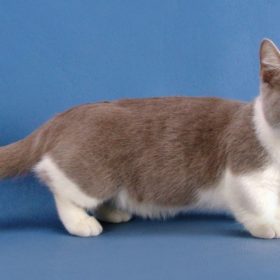 Munchkin Shorthair
Munchkin Shorthair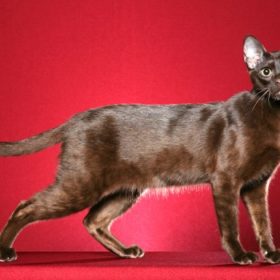 Havana Brown
Havana Brown Maine Coon
Maine Coon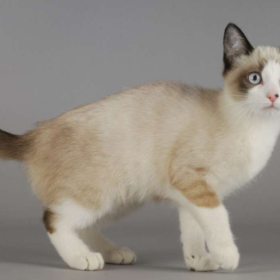 Snowshoe
Snowshoe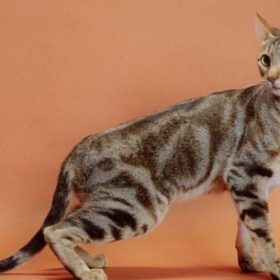 Sokoke
Sokoke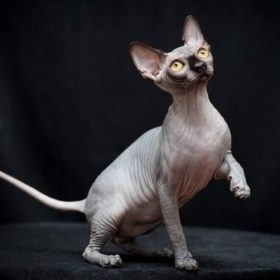 Sphynx (Canadian)
Sphynx (Canadian)